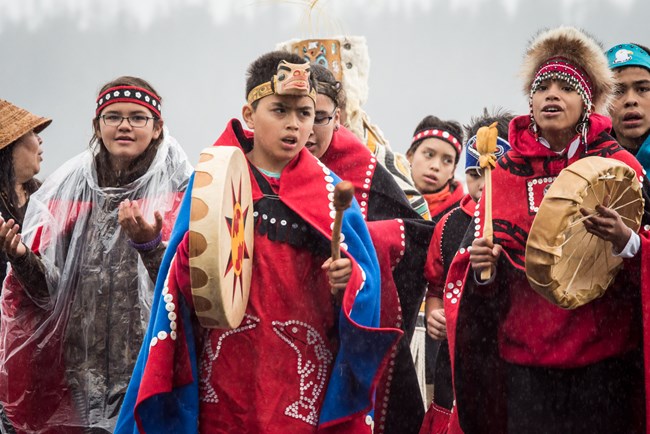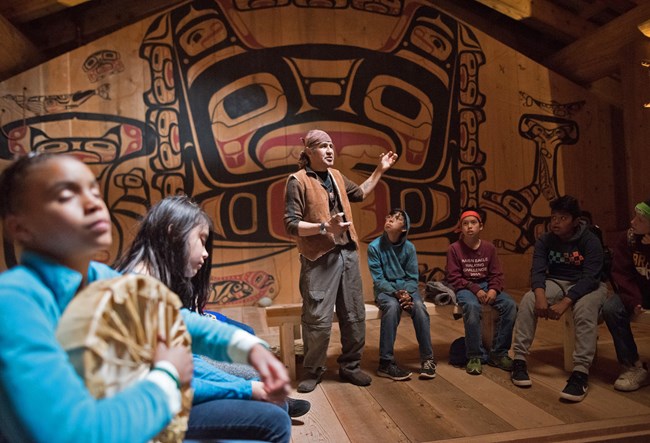Last updated: August 20, 2025
Article
Haa Léelkʼw Hás Yoo X̲ʼatángi: Our Grandparents’ Language

- Duration:
- 5 minutes, 19 seconds
Meet Daphne and Heather, two Hoonah City School instructors who teach the Łingít language to children from preschool through high school. They explain the intricacies and importance of passing on a challenging, but rich and beautiful language to the next generation.

Photo by Ian Johnson, HIA
The Tlingit language, rich in metaphor and deep in meaning, encodes the history, life ways, stories, and traditions of the Huna Tlingit. Widely spoken into the mid-20th century, the Tlingit language began to fade during a painful era of western acculturation. Today, there are fewer than 60 living fluent speakers.
Fortunately, language revitalization programs throughout Southeast Alaska focus on teaching Tlingit in many elementary, middle, and high schools and adults are reconnecting with their language roots through online classes and courses at the University of Alaska, Southeast. Hoonah City Schools, with a native enrollment of approximately 85%, provides K-12 language curricula. Language instructors Daphne Wright (K’ashGé) and Heather Powell (Lgeik'i) use stories, songs, games - and modern technology - to teach their students the intricacies of this challenging language. In partnership with Hoonah Indian Association, Huna Heritage Foundation, the National Park Service, and others, language is also taught at culture camps, on Journey to Homeland trips in Glacier Bay National Park and Preserve, and during after school programs.

Photo by Ian Johnson, HIA
Many years ago, the National Park Service and the Alaska Department of Fish and Game, Subsistence Division, worked with a group of Huna Elders to document and record the Tlingit place names that blanket the Glacier Bay landscape. These names reflect important natural resource gathering areas, ancestral stories, sacred places, and major geological and historical events that occurred in Tlingit Homeland. Tlingit place names describe more than just location – they convey the rich tapestry of human perception and experience that comprises the Tlingit world view. As mnemonic devices, place names are important cultural nuggets that trigger memories of past events and cultural life ways.

Yoo X’atángi
Haa L’éelk’w Hás Yoo X’atángi (Our Grandparents Language)
Hei Hei Hei Hei (vocables)
Haa Tóo Yéi Yatee (It’s inside of us)
Haa Tóo Yéi Yatee (It’s inside of us)
Hei Hei Hei Hei
Haa Yoo X’atángi Kei Naltseen (Our language is getting stronger)
Hei Hei Hei Hei
Ch’u Tleix áwé Kugaagastí (May it exist forever)
Hei Hei Hei Hei
-
Haa Yoo X’atángi - Łingít Language Song
Lance Twitchell X’unei (Łingít name), composed the chant to encourage all to learn and speak Łingít, using the words of four Łingít elders; Florence Sheakley, David Katzeek, Ruth Demmert and Cyril George.
- Credit / Author:
- Performed by Leah Moss, Kooxwudúyaa

